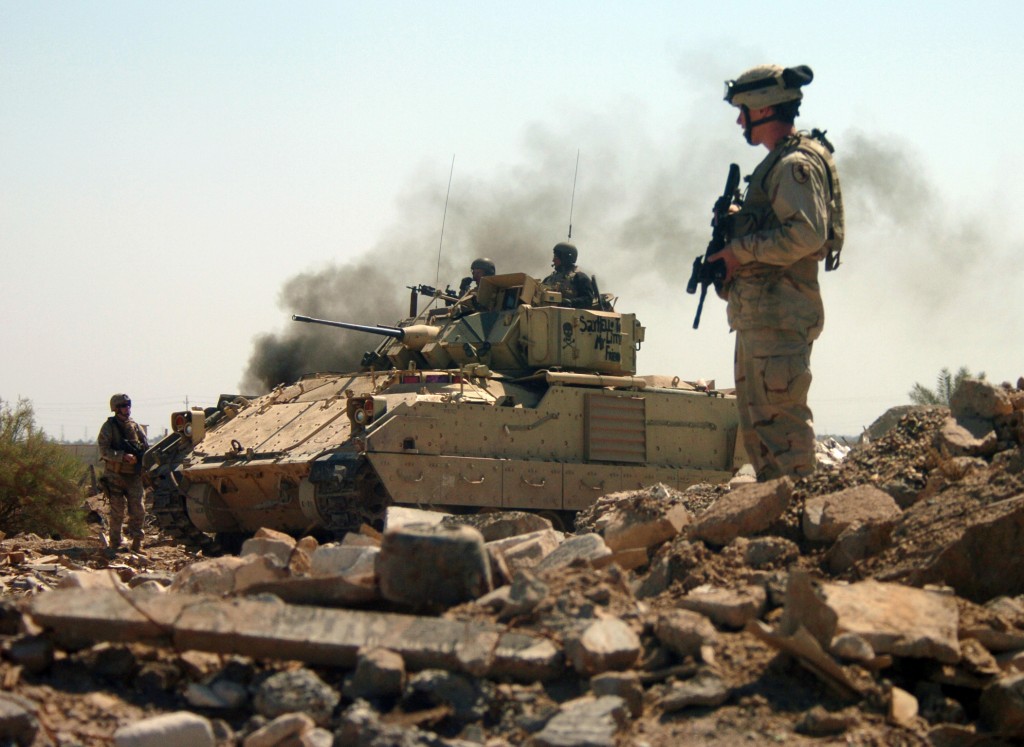WASHINGTON: The conservative Heritage Foundation has published an ambitious Index of Military Strength, which — not surprisingly — finds that the United States military is not beefy enough to manage the many threats it faces around the world.
The core finding of the well-written analysis is that the US military could handle two major theater wars at the same time — but only just. The old two Major Regional Contingency (MRC) standard dates back to the Cold War, and it took the Pentagon a long time to admit it wasn’t really either rational or doable as a strategic goal. The most recent Quadrennial Defense Review set a strategic goal of creating forces able to win one major theater war and to “hold” an “opportunistic” attacker instead of winning two major theater wars.
Here’s the logic laid out by Dakota Wood, author of the Heritage study:
“If America had the military capability to fight one and only one contingency at a time, then any time America became involved in such a contingency, the world situation would be ripe for attacks on American interests elsewhere, because an America tied down on one contingency would lack the capability to deter or defeat the attacks. America needs armed forces sufficient to protect the homeland and have the capacity to fight and win two major regional contingencies.
“The U.S. does not have the right force to meet a two major regional contingency (MRC) requirement, and is not ready to carry out its duties effectively.”
Later in the study, Wood recognizes that “there can also be strongly differing views on requirements for operational capacity. Does the country need enough for two major combat operations (MCOs) at roughly the same time or just enough for a single major operation plus some number of lesser cases?”
His conclusion: “just enough” is really “not enough.”
“Spending less than the amount needed to maintain a two-MRC force results in policy debates over where to accept risk: force modernization, the capacity to conduct large-scale or multiple simultaneous operations, or force readiness.”
His argument is based largely on an analysis of force sizing and capability. In non-military terms, we can call it building a military capable of doing what needs doing.
Wood concludes we won’t have the military we need unless we assume the more demanding two MRC standard.
To that end, he and his peeps at Heritage performed an open-source analysis of the abilities of each service to meet that standard. All but — quite surprisingly — the Air Force are ranked as “marginal,” which isn’t really marginal but means that the service “would exactly meet a two-MRC force size.”
Here are the scores with his assessments:
- Army as “Marginal.” The Army was at the low end of the middle grade (marginal) in capacity and capability and scored quite low in readiness (as reported by the Army), with the three scores combining to place it in the low end of the middle category.
- Navy as “Marginal.” The Navy scored quite strong in readiness but at a cost to future capability. Deferred maintenance has kept ships at sea, but at some point in the near future, this will affect the ability of the Navy to deploy. Combined with a weak score in capability (due largely to old platforms and troubled modernization programs) and a marginal score in capacity, the Navy is currently just able to meet requirements.
- Air Force as “Strong.” The Air Force flies a lot and has significantly more aircraft than required for a two-MRC force, but it is an Air Force of aging aircraft, and its modernization programs are problematic. Still, its high scores in capacity and readiness placed it in the best position of all of the services.
- Marine Corps as “Marginal.” The Corps’ strongest suit was in readiness, but even here there are problems as stated by the Corps itself. While the fighting competency of the service is superb, it is hampered by old equipment, troubled replacement programs for its key ground vehicles, and a shrinking force. The progress it has made in replacing its rotary-wing aircraft is a notable bright spot in its modernization portfolio.
- Nuclear Capabilities as “Marginal.” Modernization, testing, and investment in the intellectual/talent underpinnings of this sector are the chief elements plaguing the U.S. nuclear enterprise. Delivery platforms are good, but the force depends on a very limited set of weapons (in number of designs) and models that are quite old in stark contrast to the aggressive programs of competitor states.
Wood’s work provides a useful benchmark for those who don’t have access to the classified threat assessments and war games that we all assume the top decision-makers at the Pentagon operate from. Adopting the two MRC standard, I think, weakens Wood’s basic argument. Why?
Strategy must be based on a realistic assessment of threats and resources — and the US military has for some time admitted it cannot and probably doesn’t need to fight two big wars in widely separated areas. In fact, three of the four Joint Chiefs of Staff told the House Armed Services Committee in late 2013 that they couldn’t meet the Defense Strategic Guidance standard of one MRC and one hold if sequestration had stuck through 2014. It didn’t, but it surely gives one pause.
Navy jet trainer fleet operations remain paused after engine mishap
One week after the incident, a Navy spokesperson says the service is continuing to assess the fleet’s ability to safely resume flight.



























